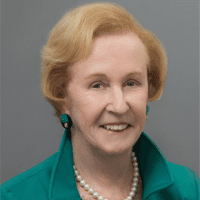A few years ago, my retired partner, John MacIntyre, wrote a series of articles for our newsletter about selecting a retirement community. Anyone who knows John, knows that he makes no decision without doing comprehensive research. We were the beneficiaries of his research and his practical experience.
After years of my advising clients about this important decision, a year ago my husband and I moved into a retirement community in Sarasota, Florida where we are very happy. As we all know, there is theory and then practical knowledge. So, in this article and the next, I will share our observations about selecting the right retirement community, building on the information John previously provided to us, much of which I am integrating into my articles. Thank you, John!
An AARP survey in November 2021 found that 77% of all adults surveyed over age 50 want to stay in their own homes as they age. The idea of living in your own home until you die resonates emotionally with many people. However, continuing to live on your own as you age may not be practical or desirable. Even if you are fortunate enough to have adult children who live close by, want to help, have lots of spare time, and have the skills to manage health and home care, it may be a lot to ask of anyone and may even put serious strains on your relationships.
What type of retirement community to select?
There are many choices of retirement communities. Active adult communities are typically restricted to those over fifty-five. They have lots of activities and no health care components. Assisted living facilities provide meals and help with some daily activities. Nursing homes are for those who need round-the-clock skilled nursing, and memory care facilities are for those whose memory loss does not allow them to live independently. Some communities offer a hybrid of independent living and assisted living, but no health care.
In our case to make sure we only had to move once, we selected a Continuing Care Retirement Community (CCRC) which contains the full spectrum of independent living, assisted living, memory care and skilled nursing. Typically, a new resident of a CCRC will move into independent living (a home or apartment) and transition as needed through some of the other levels of care.
When to move?
Just as your living costs change over your retirement years, the decision to move out of your own home into a retirement community of some kind typically occurs later in your retirement. In fact, one study has indicated that eighty-five is the average age—however it might not be wise to wait that long.
Based on our observations, we would recommend you move when you’re in your mid to late seventies. When you move to a CCRC, it is sort of like going to college. You are thrust into a community where you may not know many of the other residents. Getting to know a bunch of new people is easier when you are in your 70s then when you are in your 80s. However, since these people are going to be your neighbors for the rest of your lives, it’s important to get a sense of what the interests of the other residents are and what activities are available before you move.
For instance, in our community, most have college/graduate degrees and had interesting careers. They are interested in symphony, theatre, ballet, and opera. There is plenty to do. There are bicycle and kayaking groups as well as woodworking and artist facilities. There is a large fully equipped gym with classes in water aerobics, yoga, tai chi, sit fit, ballet and even tap dancing. There are several bridge, domino and mahjong groups.
Why to move?
When I have asked other residents why they decided to move, they give me a variety of answers. Most frequently mentioned is that by making this move, they have given their family the gift of not having to worry about taking care of them as they age. You may never need the daily care of assisted living, and you may be that very rare person who never goes to the hospital and needs skilled nursing upon release. The benefit of a CCRC is that if you do need that care, it’s all part of the community in which you’re already living.
Where to move?
The first thing you have to decide is whether you want to stay in the same area where you are currently living or move to another area. When my sister moved to a CCRC, it was three miles from her home and many of her friends moved there as well. That was the perfect decision for her.
In our case, I was born in Washington DC and lived there all my life. However about 15 years ago we bought a small place in Bradenton, Florida which is close to Sarasota. Although we didn’t use the place that often for the first ten years it gave us a sense of what it would be like to live there. Then we moved to a bigger apartment in downtown Sarasota where we lived for five years.
If you decide you want to move to another locale, make sure you stay for an extended period of time particularly during “off season.” The last two years we were in Sarasota were during Covid, so we found out what Florida was like in summer. We discovered it wasn’t any hotter than DC and there always seemed to be a breeze blowing so it wasn’t unbearable.
Also look at whether good CCRCs are available nearby even if you aren’t ready to make the move. In our case when we moved to Sarasota, we got on the waiting list of the CCRC which we thought would be a good choice for us. It was near our current apartment, as well as near to the major hospital and medical care (which is increasingly important as you age.)
What questions to ask before you invest?
Just as with any other investment, it’s important to investigate before you commit. In my next article, we will discuss the financial aspects of this major decision.
Presented by Alexandra Armstrong, CFP®, CRPC®

